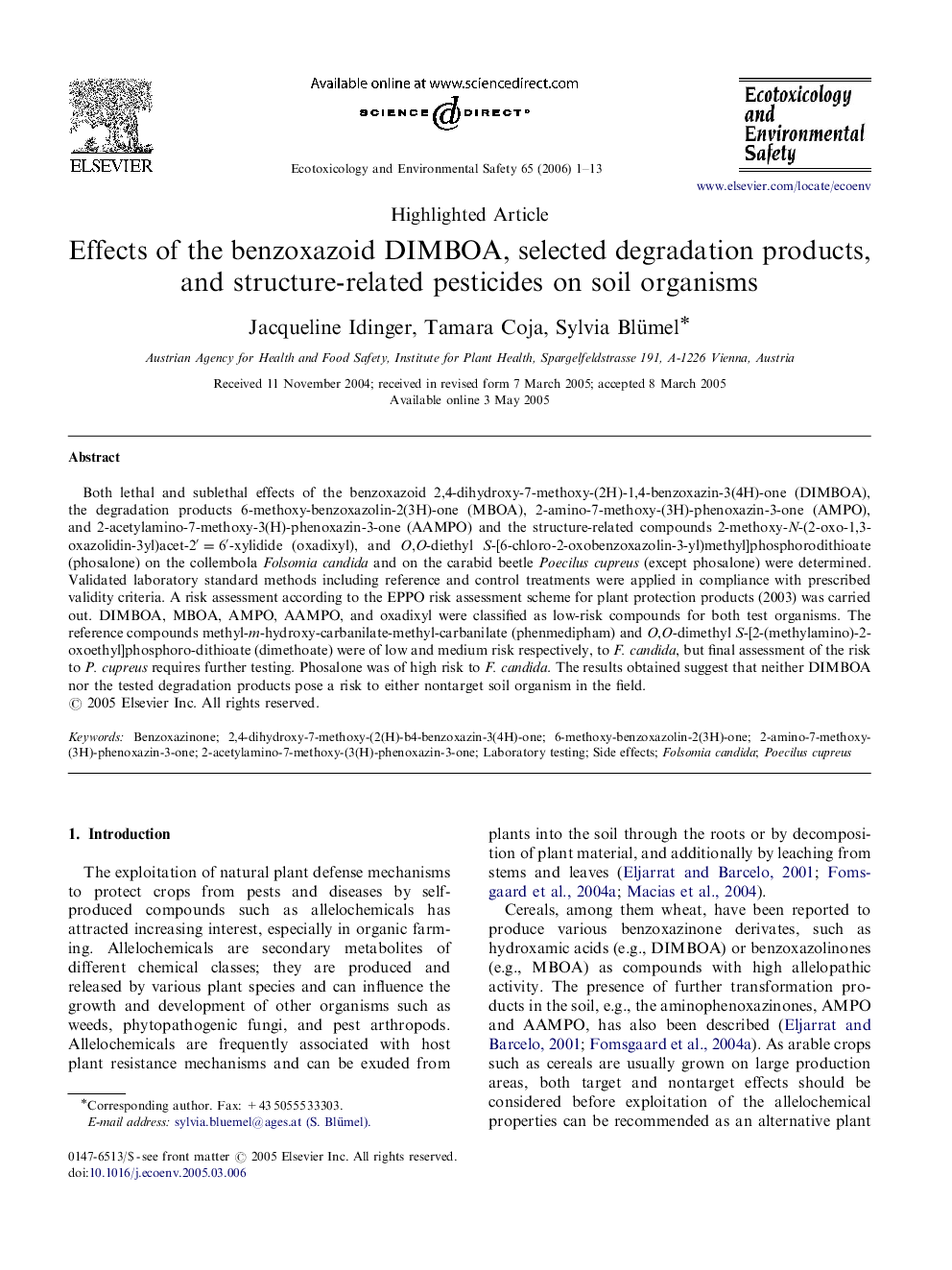| Article ID | Journal | Published Year | Pages | File Type |
|---|---|---|---|---|
| 4422318 | Ecotoxicology and Environmental Safety | 2006 | 13 Pages |
Both lethal and sublethal effects of the benzoxazoid 2,4-dihydroxy-7-methoxy-(2H)-1,4-benzoxazin-3(4H)-one (DIMBOA), the degradation products 6-methoxy-benzoxazolin-2(3H)-one (MBOA), 2-amino-7-methoxy-(3H)-phenoxazin-3-one (AMPO), and 2-acetylamino-7-methoxy-3(H)-phenoxazin-3-one (AAMPO) and the structure-related compounds 2-methoxy-N-(2-oxo-1,3-oxazolidin-3yl)acet-2′=6′-xylidide (oxadixyl), and O,O-diethyl S-[6-chloro-2-oxobenzoxazolin-3-yl)methyl]phosphorodithioate (phosalone) on the collembola Folsomia candida and on the carabid beetle Poecilus cupreus (except phosalone) were determined. Validated laboratory standard methods including reference and control treatments were applied in compliance with prescribed validity criteria. A risk assessment according to the EPPO risk assessment scheme for plant protection products (2003) was carried out. DIMBOA, MBOA, AMPO, AAMPO, and oxadixyl were classified as low-risk compounds for both test organisms. The reference compounds methyl-m-hydroxy-carbanilate-methyl-carbanilate (phenmedipham) and O,O-dimethyl S-[2-(methylamino)-2-oxoethyl]phosphoro-dithioate (dimethoate) were of low and medium risk respectively, to F. candida, but final assessment of the risk to P. cupreus requires further testing. Phosalone was of high risk to F. candida. The results obtained suggest that neither DIMBOA nor the tested degradation products pose a risk to either nontarget soil organism in the field.
